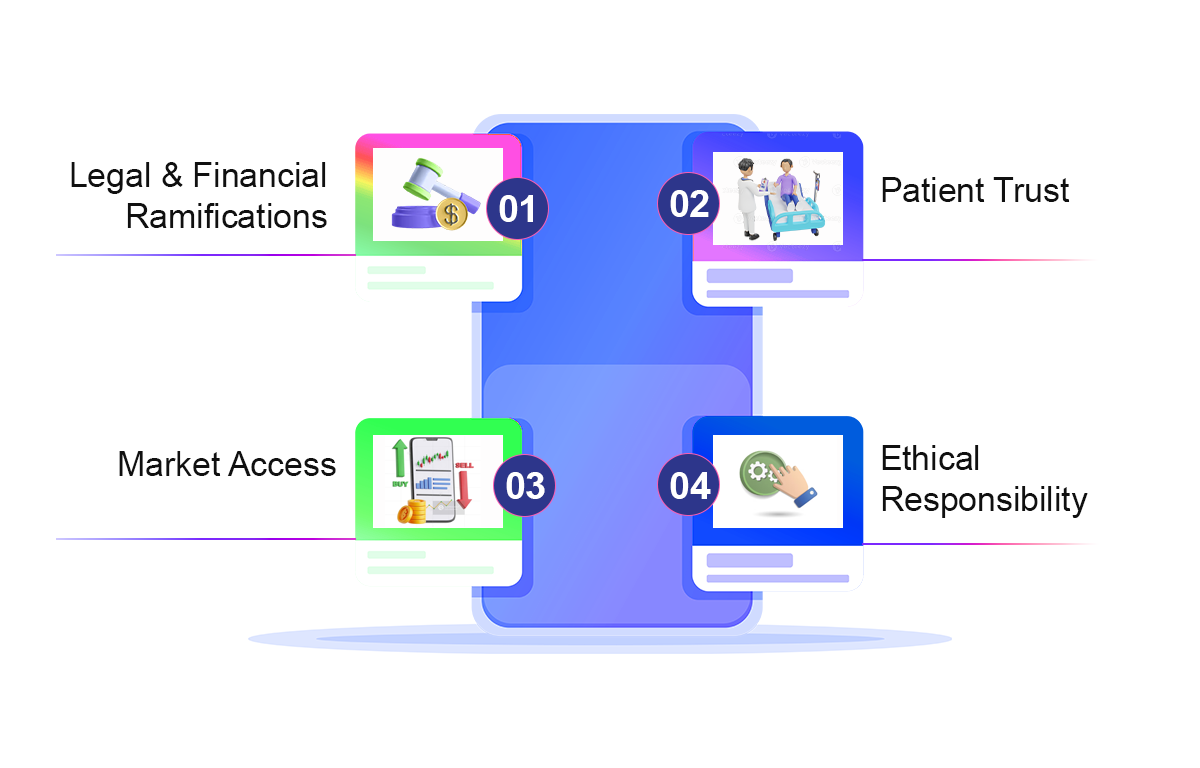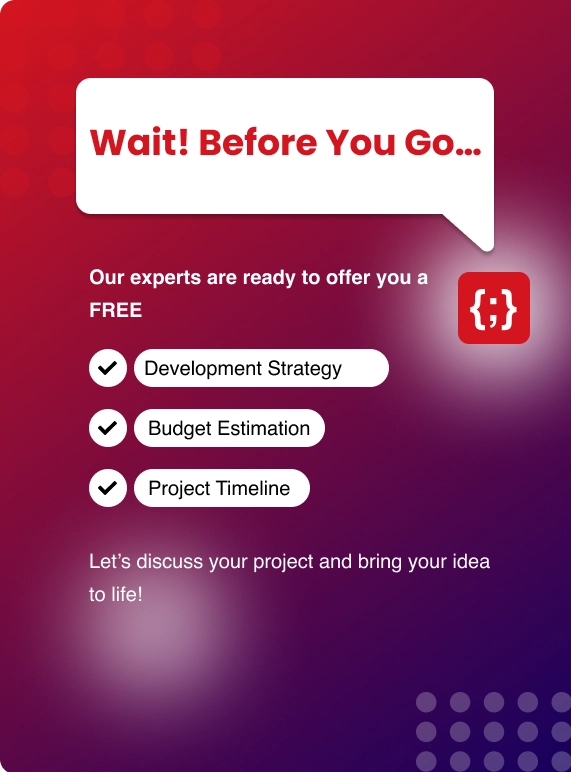HIPAA compliance is not just a best practice; it is law when it comes to developing applications that deal with sensitive patient data for the U.S. market.
This detailed guide will dissect all the reasons impacting the costs, take a look into standard price ranges, and provide suggestions for developing a secure and compliant healthcare application without any excessive costs.
What is HIPAA?
HIPAA is a U.S. federal law passed in 1996 to protect sensitive patient health information (Protected Health Information or PHI) from disclosure without the patient's consent or knowledge.
From the perspective of an app developer, the major issues of HIPAA to understand include:
- Privacy Rule: Establishes the national standards for when PHI can be used and disclosed.
- Security Rule: Defines the safeguards to secure the confidentiality, integrity, and availability of ePHI, thus becoming the most relevant part for app development.
- Breach Notification Rule: Ensures that persons and HHS (U.S. Department of Health and Human Services) are notified of any breaches of data.
Noncompliance with these rules can burden you with heavy penalties, from fines ranging from $100,000 to $1.5 million per violation category, per year; lawsuits; and loss of goodwill. Therefore, it is critical to ensure that HIPAA compliance is built into the app from the very beginning.
Why Investing in HIPAA Compliance is Non-Negotiable
HIPAA compliance cost-cutting quick fixes may seem tempting but are very dangerous. Here's why:

- Legal & Financial Ramifications: Penalties may be so severe that they can destroy a business.
- Patient Trust: Patients entrust you with sensitive information. A data breach causes loss of trust and irreversible reputational damage.
- Market Access: Many healthcare organizations won't partner with or use your app without proven HIPAA compliance.
- Ethical Responsibility: Preserving patient privacy is the right thing to do.
The long-term viability, trustworthiness, and success of your healthcare solution depend on building full HIPAA compliance from the start.
Core Factors Influencing the Cost of HIPAA-Compliant App Development in 2025
1. App Features & Complexity (The Biggest Cost Driver)
The more features and the more complex their functionality, the higher the development time and cost:
- Basic Features (Lower Cost Range: ~$30,000 - $70,000):
- Secure user registration & authentication (login, password reset)
- User profiles (patient/provider)
- Basic appointment scheduling & reminders
- Informational content display
- Simple medication reminders
- Moderately Complex Features (Mid Cost Range: ~$70,000 - $150,000):
- Telehealth (secure video/audio calls, chat)
- E-prescribing (eRx) functionality
- Basic EHR/EMR viewing
- Secure in-app messaging
- Wearable device data integration
- Customizable dashboards
- Secure push notifications
- Highly Complex Features (Higher Cost Range: ~$150,000 - $500,000+):
- Full EHR/EMR bi-directional integration (e.g., Epic, Cerner)
- Advanced remote patient monitoring (RPM) with multiple devices
- AI and Machine Learning integration
- Comprehensive reporting and analytics
- Complex user roles and permission hierarchies
- Multiple third-party integrations (labs, pharmacies, insurers)
- Advanced payment gateway with insurance claims
- Multi-language support
2. HIPAA-Specific Technical & Administrative Safeguards
Implementing HIPAA Security Rule safeguards adds cost and complexity. These are mandatory:
Technical Safeguards:- Access Controls (unique user IDs, role-based access control, automatic logoff)
- Audit Controls (logging and monitoring of system activity)
- Integrity Controls (prevent unauthorized alteration of ePHI)
- Transmission Security (end-to-end encryption in transit and at rest)
- User Authentication (multi-factor authentication recommended)
- Security Risk Analysis ($2,000 - $20,000 depending on complexity)
- Security Management Process (policies to prevent, detect, correct violations)
- Workforce Training & Management
- Business Associate Agreements (BAAs) with third-party vendors
Physical Safeguards: Mostly relevant for on-premise servers, but cloud services (AWS, Azure, GCP) must be configured HIPAA-compliantly with signed BAAs.
Adding these HIPAA security features can add roughly $10,000 - $50,000+ or 20-50% more than a similar non-HIPAA app.
3. Development Process & Team Composition
Platform ChoiceChoosing the right platform is a foundational decision:
- Native (iOS or Android): Offers best performance and UX but requires separate development efforts if you need both.
- Cross-Platform (e.g., React Native, Flutter): Can reduce initial development costs and time for presence on both platforms, but may have limitations for highly complex features or deep hardware integrations.
- Web App/PWA: Accessible via browsers, can be a good starting point or complement to mobile apps. Cost increases if you target multiple platforms natively.
UI/UX Design
Healthcare apps demand intuitive, accessible (WCAG compliance is a best practice), and user-friendly design while ensuring security and privacy. Good UI/UX for a healthcare app can cost $5,000 - $30,000+.
Development Team Location & Expertise- North America (USA/Canada): $100 - $250+/hour per developer.
- Western Europe: $70 - $150+/hour.
- Eastern Europe: $40 - $100/hour.
- Asia (e.g., India): $25 - $75/hour. Crucially, choose a team with demonstrable experience in developing HIPAA-compliant healthcare apps. This specialized expertise might come at a premium but is invaluable.
Integrating with EHRs, lab systems, payment gateways, pharmacy APIs, etc., adds complexity and cost for each integration.
Testing & Quality Assurance (QA)Rigorous testing is vital, especially for security and compliance. This includes functionality testing, usability testing, security testing (vulnerability assessments, penetration testing – which can cost $1,000 - $5,000+ per test), and compliance testing. QA can account for 20-30% of the total development budget.
Deployment & Initial SetupCosts associated with setting up secure server environments, app store submissions, etc.
4. Discovery & Planning Phase
A thorough discovery phase is essential before coding:
- Market research
- Clear objectives and app scope definition
- Feature prioritization
- Technical specification and compliance strategy planning
Cost: $5,000 - $15,000+ but saves money by preventing scope creep and misalignment.
5. Post-Launch Costs (Ongoing Maintenance & Compliance)
- Regular security audits and updates
- Ongoing HIPAA compliance checks
- Secure cloud hosting ($200 - $1,500+/month)
- Customer support and bug fixes
- OS updates and new feature additions
- Annual maintenance: 15-25% of initial budget
Estimated Cost Ranges for HIPAA-Compliant Apps in 2025
- Simple App (MVP): $40,000 - $100,000 | Timeline: 3-6 months
- Moderately Complex App: $100,000 - $250,000 | Timeline: 6-12 months
- Highly Complex App: $250,000 - $650,000+ (can exceed $1 million) | Timeline: 12-24+ months
Cost Breakdown Example for a Moderately Complex App
- Discovery & Planning (10-15%): $10,000 - $37,500
- UI/UX Design (10-15%): $10,000 - $37,500
- Backend Development incl. HIPAA (30-40%): $30,000 - $100,000
- Frontend/Mobile App Dev (25-35%): $25,000 - $87,500
- Testing & QA (15-20%): $15,000 - $50,000
- Deployment & Setup (5%): $5,000 - $12,500

Strategies to Manage and Optimize Development Costs
- Start with a Minimum Viable Product (MVP): Focus on core, essential features for the initial launch. Gather user feedback and iterate, adding more complex features in later phases.
- Clear & Detailed Project Scope: A well-defined scope from the outset minimizes costly changes and scope creep during development.
- Choose the Right Development Partner: Select an agency or team with proven, verifiable experience in building HIPAA-compliant healthcare applications. While their hourly rates might be slightly higher, their expertise can save you from costly mistakes and ensure compliance is handled correctly from the start.
- Leverage HIPAA-Compliant Cloud Services: Utilize BaaS (Backend-as-a-Service) or PaaS (Platform-as-a-Service) solutions from providers like AWS, Azure, or Google Cloud that offer HIPAA-eligible infrastructure and services. This reduces the burden of managing physical servers and some aspects of physical security.
- Consider Cross-Platform Development (Carefully): For simpler apps or MVPs, cross-platform frameworks can save initial costs. However, for complex apps needing deep native capabilities or extensive device integrations, native development might be more robust and long-term.
- Phased Development & Iteration: Break the project into smaller, manageable phases. This allows for better budget control and flexibility to adapt based on feedback.
- Prioritize Security by Design: Integrate security and compliance considerations into every stage of the Software Development Lifecycle (SDLC), rather than treating them as an afterthought. This "shift-left" approach can prevent costly retrofitting.
- Automate Where Possible: Use automated testing tools and CI/CD pipelines with security checks to improve efficiency and catch issues early.

Partner with Zenesys for HIPAA-Compliant Software Development
While the initial investment can seem substantial, it's crucial to view these costs not as an expense, but as a fundamental investment in patient safety, data security, legal adherence, and the overall trustworthiness of your application.
At Zenesys, we clearly define your app's purpose, starting with an MVP our experienced developers are specialized in HIPAA compliance, and prioritize security from day one. We have been building valuable and compliant healthcare solutions that meet user needs while safeguarding their sensitive information.
Always consult with legal and compliance experts specializing in HIPAA like Zenesys to ensure your app meets all necessary requirements.


.webp?lang=en-US&ext=.webp)

.webp?lang=en-US&ext=.webp)

